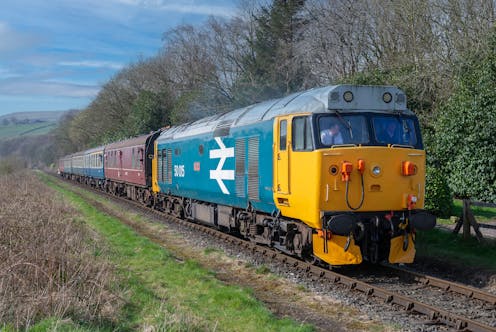
“This is the age of the train” was the British Rail catchphrase in the late 1970s, showcasing advances in technology, such as tilting trains, and advanced transport hubs, like the Euston station complex.
But this was well before the privatisation of the railways from 1994 onwards. With the currently proposed re-nationalisation under Labour, and the creation of Great British Railways working to deliver the most ambitious changes to our railways in a generation, will we finally achieve the so-called age of the train, and what would this actually mean?
To answer that question, we need to consider a number of elements: history and legacy; quality of service; lack of current leadership; and control and accountability.
Firstly, history and legacy. In the early 1990s, British railways were at their most commercial and just about breaking even from a financial perspective, albeit on rather limited available capital.
The system had its defined sectors of InterCity, Network SouthEast, Scotrail, Regional Railways, and Freight. In 1993, under state ownership, the cost per passenger kilometre in the UK was among the cheapest in Europe.
However, during the privatisation period costs to passengers in the UK went from being one of the lowest to one of the most expensive. But, this increase in costs did not equate to improved performance. In fact, UK trains running in 2021-22 were 74.3% on time, which is worse than the last days of British Rail when it was 89.6%.
On the positive side, under privatisation, passenger growth was initially 4% per year, the highest in Europe, and actually created the most highly utilised passenger rail system in Europe, with results of increased capacity, which delivered regular, clean, fast services for much of the network.

Fast forward to 2024 and anyone who regularly uses trains would acknowledge that gone are the days of reading a broadsheet newspaper during a commute. Now, we almost always have people standing in overcrowded carriages.
Fundamentally, this is something that the proposed nationalised railway cannot change – in the short to medium term we are constrained by the historic need for a low operational cost model, with a high capital expenditure on technology and equipment. This translates as high ticket price and insufficient capacity.
Secondly, quality of service is much harder to qualify. Setting aside the challenges of on-board catering (with the 1970s famously bad British Rail sandwiches) where British Rail excelled was in end-to-end connectivity of the rail system.
For example, as trains actually waited for connecting services, because they were all part of the same organisation, more people managed to get home by train more often. This provision of a transparent and actually seamless service is long gone.
Announcements on trains of delays and cancellations (when we can actually understand what is being said on the antiquated PA systems) result in all passengers accessing their phones and trying to put together their own solutions, often with a number of different companies.
Additionally, in terms of quality of service – across the country, many services simply do not have enough capacity for the passengers who want to travel. This especially applies on major commuting routes such as Manchester to Leeds in the north of England, where the number of carriages per train is restricted due to the length of station platforms – thereby setting a limit on the amount of people who can travel.
This results in overcrowding, discomfort and a disgruntled travelling public. Of course, many people then opt out of travelling by rail and drive instead, which flies in the face of the need to decarbonise.
Which brings us to the third element, lack of leadership, control and accountability. In 2021 the Shapps report (Great British Railways: The Williams-Shapps Plan for Rail clearly identified the absence of leadership as a key failing and the main reason for the state of today’s rail system.
What is required to nationalise the railways?
So, would leadership improve under nationalisation?
A particular challenge will be that the same people who operate our trains today will operate them when nationalised. Therefore, clear performance to the nationalisation plan is essential, as is the need to have consequences for failure of the system, including a failure of leadership.
But nationalisation could see the implementation of assertive central leadership, just like under British Rail. This strong governance will help set a clear strategy, with transparent aims and objectives attached to realistic time frames.
Other key changes will involve: all private sector franchise passenger operators being nationalised; reforming rail franchising; rail freight support; and a green light for “open access” (an open access operator takes on full commercial risk but it’s not subject to franchising as current operators are).
Additionally, many of the operational systems are legacy monopolies controlled by the same companies that delivered the rail services in 1994. The new public railway will need to grapple with many technological challenges, very rapidly, or risk alienating their key stakeholder – the travelling public.
From a people perspective, the carry-over of existing skilled and experienced staff is a key area that needs to be thought through.
Alongside this, there are some significant skills gaps, because there has been no incentive for a rail contractor on a three-year contract to ensure a ready supply of trained engineers and operational staff.
So what should we expect? Perhaps not much. It will be the same train, with the same staff, the same sandwiches, and probably the same eye-watering prices. But, the potential is there to have greater efficiency and accessibility.
The authors do not work for, consult, own shares in or receive funding from any company or organisation that would benefit from this article, and have disclosed no relevant affiliations beyond their academic appointment.
This article was originally published on The Conversation. Read the original article.







